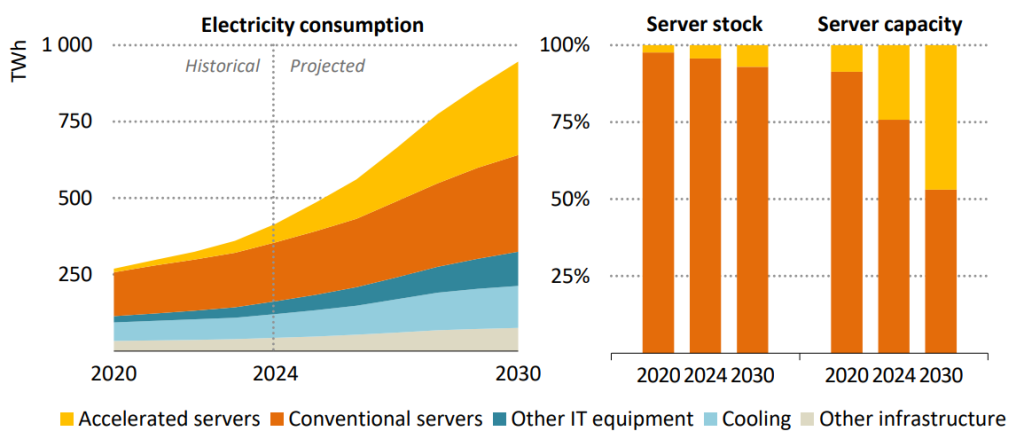Jamaica’s outlook revised to stable by Fitch after hurricane
In an ongoing trade war with China, the US imposed 145% tariffs while China retaliated with 125% on US imports. This appears to be the ceiling for both parties at the negotiating table, as President Trump signaled on Thursday that “I don’t want them to go higher because at a certain point you make it where people don’t buy.”
What appears to be non-negotiable is the US export control on advanced AI chips. Through a SEC filing, Nvidia (NASDAQ:NVDA) revealed another licensing restriction on Monday, this time on H20 chips for AI workloads in data centers. This clearly marks the American long-term, bipartisan strategy to slow down Chinese AI progress.
Conversely, such a strategy translates into US-centric AI investments.
The Compounding $500 Billion AI Push
Alongside H20 restrictions, Nvidia announced its intent to contribute $500 billion to US-led AI infrastructure over a 4-year period. Partnerships with Taiwanese companies Wistron and Foxconn will facilitate that buildup, alongside Arizona-based Amkor Technology (NASDAQ:AMKR), specialized in semiconductor testing and packaging.
In what appears to be a coordinated effort, Big Tech heavyweights had already joined in. In February, Apple (NASDAQ:AAPL) announced an equal $500 billion investment over the same 4-year period, including the brand new Houston AI server manufacturing facility, set to go online in 2026.
The first to set this magic $500B investment framework was Oracle (NYSE:ORCL) executive chairman Larry Ellison under the Stargate umbrella, which includes Japanese SoftBank (SFTBY) and OpenAI. Although there was a design-related pause in January for Microsoft’s $3.3B Mount Pleasant data center in Wisconsin, it is still a go for 2026 launch.
For 2024, Meta Platforms (NASDAQ:META) allotted $65 billion for AI investments. At the end of the year, the social media giant added another $10 billion for the Richland Parish AI data center in Louisiana.
Entrenching American Dominance Over the EU
The new AI infrastructure layer will require massive amounts of cheap energy. In April’s report, the International Energy Agency (IEA) projected 30% annual growth of electricity consumption in accelerated servers as the base case scenario.
Global data center electricity consumption. Accelerated servers represent AI. Image credit: IEA
This translates to a 70% increase in electricity demand coming from AI servers between 2025 and 2030. For this reason, President Trump issued multiple executive orders (EOs) in his first month in office, starting with Unleashing American Energy. In April, the directive to further remove bureaucratic obstacles to deliver cheap energy reinvigorated interest in coal.
Having also withdrawn from the Paris Climate Agreement, Europe is once again on the back foot. Following the bombing of Nord Stream pipelines, which delivered cheap Russian gas, Germany as the EU’s economic engine suffers escalating deindustrialization.
Not only has Europe’s energy grown more expensive, thus making its economy less competitive, but the continent is firmly moving in the direction of economy-disabling net-zero policies in stark contrast to America.
Moreover, with an announced plan to splurge €800 billion on the ReArm Europe Plan, just as US Defense Secretary Hegseth instructed a month prior, the EU’s focus will be on the vassal relationship with the US instead of leading the AI charge. Consequently, the EU is set to be subservient to US-based data centers just as it is now subservient to the Big Tech.
In turn, the US stock market is likely to see even more inflows. In September 2024, the largest European stock exchange Euronext held $5.6 trillion worth of capital compared to NYSE at $28.3 trillion.
AI as the New Governance Technology Frontier
All of these factors bolster our previous thesis that AI is not a bubble. Simply put, AI will serve as the cutting-edge governance technology through private-public partnerships (PPPs). This powerful tech has the capacity to control the content space in a deeply interactive manner. And if thoughts can be intercepted and molded by interacting with AI models, the behavior can be modified as well.
This capacity is critical for automated narrative control as various agendas are implemented. The aforementioned Oracle co-founder, Larry Ellison, summed up such global AI deployment as follows:
“Citizens will be on their best behavior, because we’re constantly recording and reporting everything that’s going on,”
Altogether, these are strong signals for retail investors to move beyond “AI is a bubble” FUD. Instead, they should consider both AI and energy stocks for long-term growth in their portfolios.
***
Neither the author, Tim Fries, nor this website, The Tokenist, provide financial advice. Please consult our website policy prior to making financial decisions.
This article was originally published on The Tokenist. Check out The Tokenist’s free newsletter, Five Minute Finance, for weekly analysis of the biggest trends in finance and technology.
